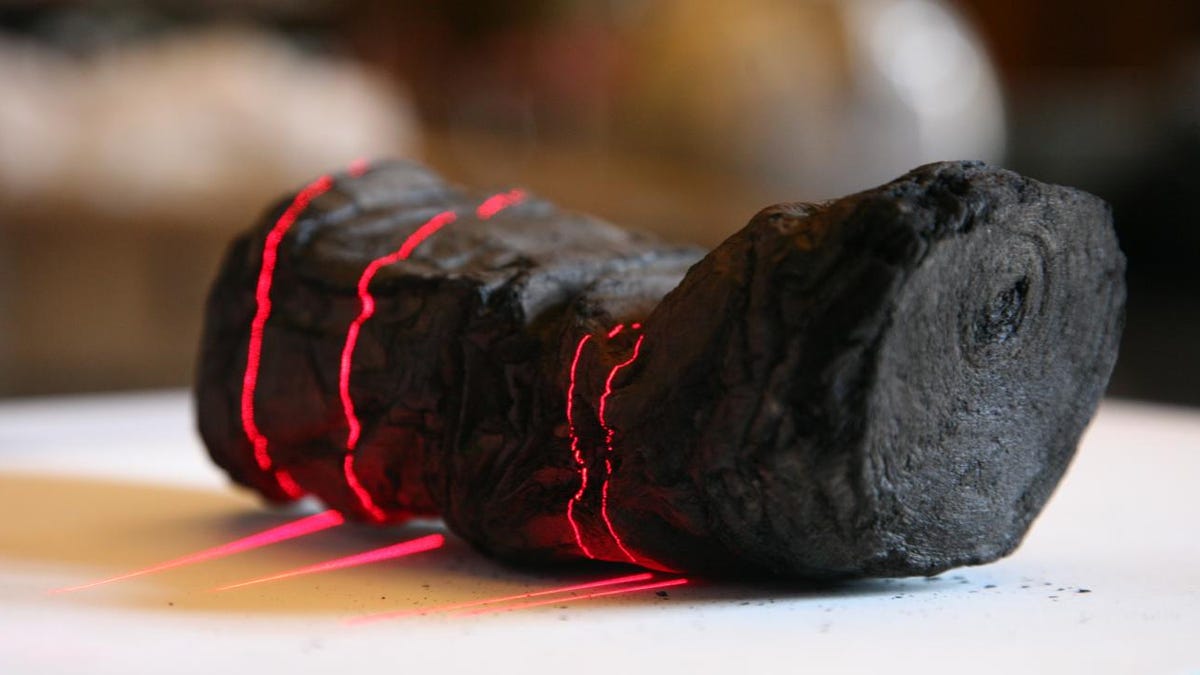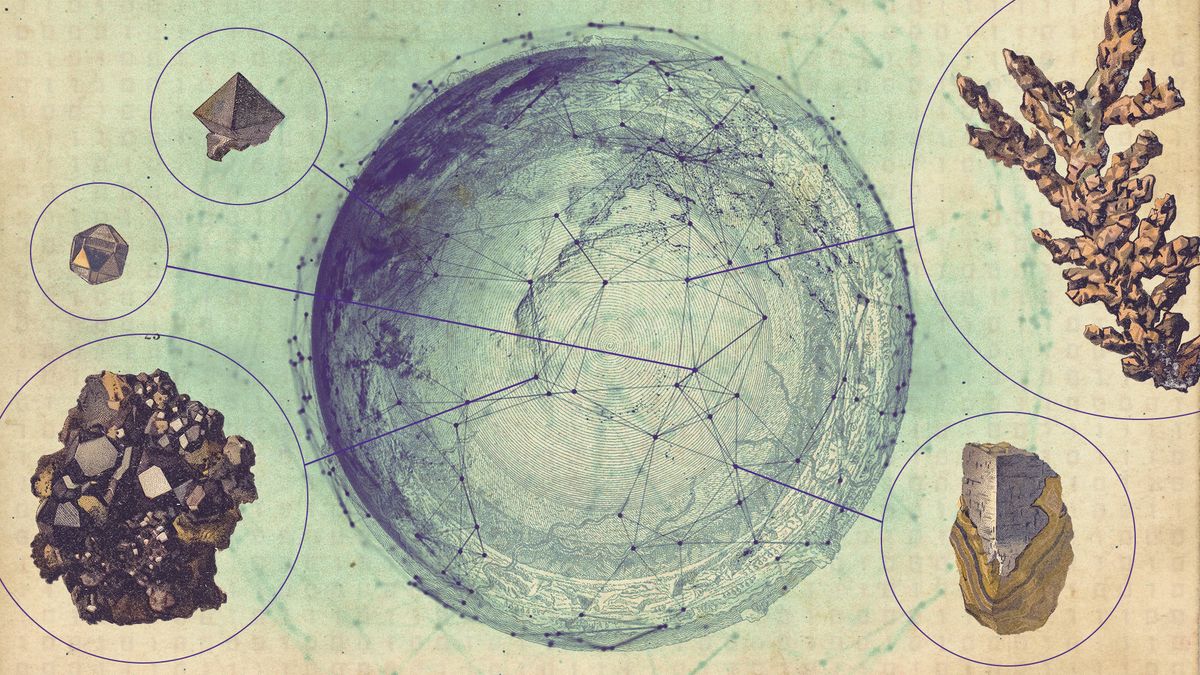Herculaneum scroll with red laser lines undergoing scanning at the Institut de France by Brent Seales and his research team.
Following a significant volcanic eruption, spanning two millennia, and an international endeavor employing artificial intelligence to decipher a collection of enigmatic ancient scrolls, scholars have unveiled the preoccupations of at least one Roman Epicurean philosopher: food.
Despite the inherent unpredictability of humans, there is a certain endearing predictability to their interests.
This discovery marks the culmination of the Vesuvius Challenge, an initiative initiated in March 2023 by Brent Seales, a researcher from the University of Kentucky, former GitHub CEO Nat Friedman, and entrepreneur Daniel Gross. The primary objective was to utilize computed tomography (CT) scans of the Herculaneum scrolls alongside machine-learning software to enable tech-savvy enthusiasts worldwide to decipher the scrolls without physical contact.
With backing from Silicon Valley, the competition offered monetary rewards to incentivize advancements in unraveling the content of the scrolls, which were buried and carbonized during the eruption of Mount Vesuvius. The prize of $700,000 will be divided among the triumphant trio comprising Youssef Nader, Luke Farritor, and Julian Schilliger, all students. Their submission of 15 text columns, upon preliminary analysis, appears to discuss the impact of goods’ scarcity or abundance, such as food, on human enjoyment.
The Vesuvius Challenge signifies a pivotal moment in the quest to unveil the secrets within the scrolls. It also holds personal significance for Seales, the University of Kentucky researcher, who has dedicated the past two decades to this endeavor.
Seales and his team are now closer than ever to deciphering the treasure trove of texts. The competition, irrespective of the December 31 deadline, sparked immense interest and engaged new collaborators, whose collective efforts Seales likened to a decade’s worth of work in just three months.
Reflecting on the transformative power of AI, tomography, and computation, Seales expressed his astonishment at the potential for redemption brought about by these technological advancements.
While the journey may seem arduous, the potential yield is substantial. Michael McOsker, a researcher familiar with the scrolls, estimates that these efforts could unveil the equivalent of approximately 200 new books, making this collection the sole surviving library from antiquity.
Brent Seales and Seth Parker, the Digital Restoration Initiative project lead, are depicted scanning a replica of the Herculaneum scroll on the University of Kentucky campus.
Seales’ foray into unraveling ancient texts was not a predetermined path. Initially an imaging specialist with a keen interest in AI, Seales recognized the potential in computer vision amidst a relatively stagnant AI landscape. His collaboration with a University of Kentucky professor in the mid-1990s, focusing on digitizing the Anglo-Saxon epic poem Beowulf, sparked his curiosity. This venture evolved from digitization to restoration, with the vision of digitally unfurling aged documents.
In 2004, a breakthrough presented itself when a University of Michigan classics scholar, Richard Janko, identified the ideal candidate for Seales’ unwrapping endeavors.
The eruption of Vesuvius in modern times evokes haunting images of ash-entombed figures frozen in time as their world succumbed to destruction. The sole contemporary account, penned by Roman author Pliny the Younger, vividly describes the chaos and devastation wrought by the volcanic eruption.
In Herculaneum, a city in close proximity to the erupting volcano, the villa of Julius Caesar’s father-in-law lay buried beneath layers of ash, preserving a library of papyrus scrolls. Discovered in the 1700s, these scrolls, though challenging to decipher, primarily contain Epicurean philosophical texts, hinting at the potential insights awaiting discovery within the remaining scrolls.
Today, the scrolls are housed across various European locations, predominantly at the National Library of Naples in Italy. Access to these fragile 2,000-year-old scrolls requires meticulous care and authorization, a privilege Seales earned through years of dedication, successful projects, and academic diplomacy.
Seales’ utilization of computed tomography to scan and digitally unwrap the scrolls marked a significant advancement in the field. Despite encountering technical hurdles, the relentless pursuit of deciphering these ancient texts persisted.
The quest to decipher the scrolls was not merely an experiment but a testament to perseverance and technological innovation. The development of software tools like the Volume Cartographer, spearheaded by Seth Parker, exemplifies the meticulous process of mapping and interpreting the intricate details within the scrolls.
As the journey continues, the team remains committed to unraveling the mysteries contained within these ancient texts, with the ultimate goal of decoding the entire library. The profound connection to humanity’s past and the enduring relevance of ancient narratives underscore the significance of this ongoing endeavor.
In the words of Seales, the essence of these ancient manuscripts encapsulates the essence of human existence, transcending temporal and technological boundaries. The pursuit of knowledge and understanding embedded within these scrolls serves as a poignant reminder of the enduring legacy of human storytelling.










